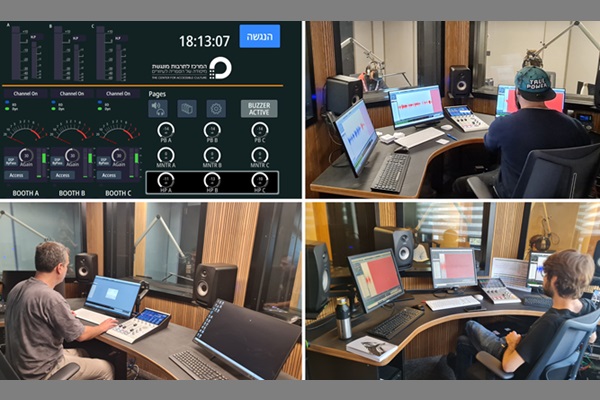The newly integrated system includes audible identifiers allowing operation with confidence by non-sighted colleagues.
Israel’s Centre for Accessible Culture, formerly known as the Central Library for the Blind (CLFB), has embarked on a studio modernisation project at its headquarters in Tel Aviv. Spearheaded by audio technology specialist Broadcast Design Ltd. based in Jerusalem, the project sees the integration of DHD SX2 radio consoles as the core system.
Micha Blum, Founder and CEO of Broadcast Design, highlighted the centre’s mission to provide classical literature, periodicals, and textbooks to blind, visually impaired, and handicapped individuals. Blum emphasised the importance of replacing outdated equipment while ensuring the new system aligns with existing workflows.
A pivotal aspect of the project was to cater to visually impaired members of the production team, ensuring ease of use. Blum noted that DHD SX2 consoles, with their customisable direct access and extensive physical buttons, proved ideal for this purpose. The integration also included Audio over IP studio connectivity using Audinate Dante, further enhancing flexibility and functionality.
Blum explained that a demo studio based on the DHD SX2 control module, coupled with an XC3 IP core, garnered positive feedback during onsite trials. This prompted the order of three complete systems for use across nine studios, configured to accommodate individual studio requirements effectively.
Key features of the DHD system include one fader per studio, each on its own bus, providing simplicity and flexibility for the CLFB team. Additionally, the system offers precise control options for loudspeaker balance and playback levels, seamlessly integrated within PC workstations in each room.
The DHD system’s versatility extended to providing identifying sounds for each control button, facilitating confident operation by non-sighted operators. Blum highlighted the system’s adaptability, enabling configuration to meet diverse accessibility needs.
Marc Herrmann, Managing Director of DHD Audio, commended Broadcast Design’s utilisation of the configuration versatility inherent in DHD audio production control surfaces and processing cores. Herrmann expressed confidence in the system’s ability to benefit vision-impaired media production staff globally.
The DHD SX2 console, characterised by a four-fader central module and integral display screens, offers operators comprehensive visibility and control over audio inputs and outputs. Expansion options include additional modules with motorised faders, each equipped with a multi-touch display for intuitive operation.
The integration of DHD SX2 consoles represents a significant step forward in ensuring accessibility and efficiency in audio production for Israel’s Centre for Accessible Culture, setting a precedent for inclusive media production practices worldwide.





































































